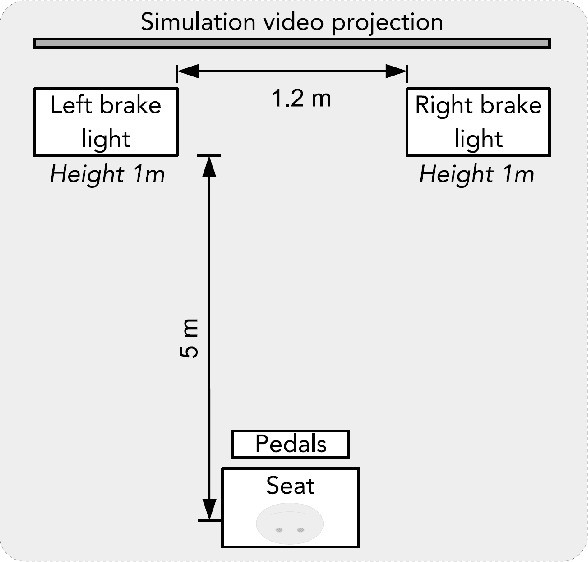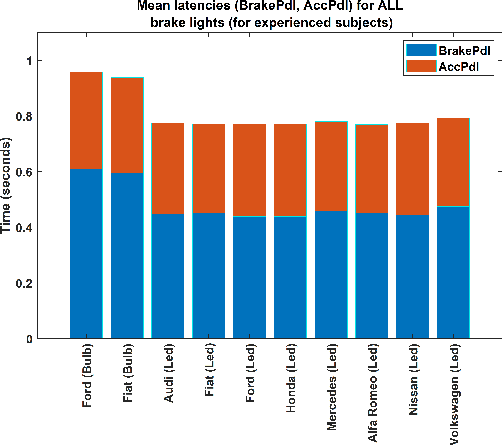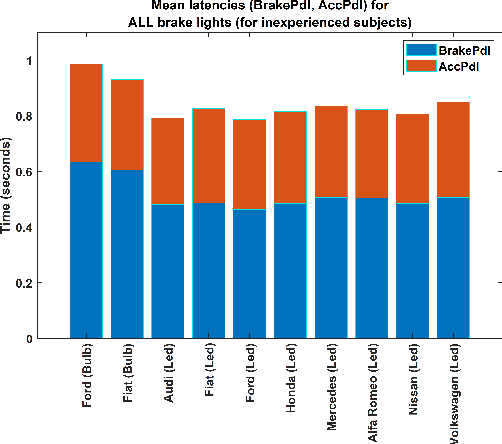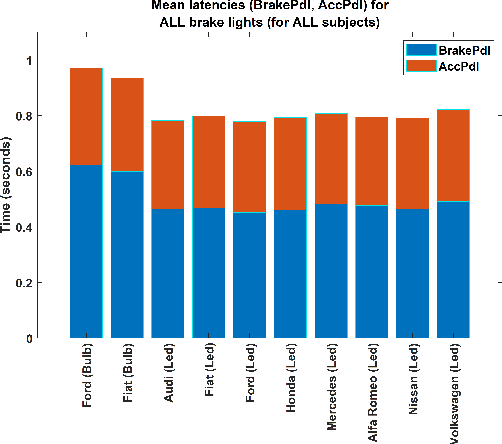Surej Mouli
In-Ear Electrode EEG for Practical SSVEP BCI
Sep 18, 2025Abstract:Steady State Visual Evoked Potential (SSVEP) methods for brain computer interfaces (BCI) are popular due to higher information transfer rate and easier setup with minimal training, compared to alternative methods. With precisely generated visual stimulus frequency, it is possible to translate brain signals into external actions or signals. Traditionally, SSVEP data is collected from the occipital region using electrodes with or without gel, normally mounted on a head cap. In this experimental study, we develop an in ear electrode to collect SSVEP data for four different flicker frequencies and compare against occipital scalp electrode data. Data from five participants demonstrates the feasibility of in-ear electrode based SSVEP, significantly enhancing the practicability of wearable BCI applications.
Dual-Mode Visual System for Brain-Computer Interfaces: Integrating SSVEP and P300 Responses
Sep 18, 2025Abstract:In brain-computer interface (BCI) systems, steady-state visual evoked potentials (SSVEP) and P300 responses have achieved widespread implementation owing to their superior information transfer rates (ITR) and minimal training requirements. These neurophysiological signals have exhibited robust efficacy and versatility in external device control, demonstrating enhanced precision and scalability. However, conventional implementations predominantly utilise liquid crystal display (LCD)-based visual stimulation paradigms, which present limitations in practical deployment scenarios. This investigation presents the development and evaluation of a novel light-emitting diode (LED)-based dual stimulation apparatus designed to enhance SSVEP classification accuracy through the integration of both SSVEP and P300 paradigms. The system employs four distinct frequencies, 7 Hz, 8 Hz, 9 Hz, and 10 Hz, corresponding to forward, backward, right, and left directional controls, respectively. Oscilloscopic verification confirmed the precision of these stimulation frequencies. Real-time feature extraction was accomplished through the concurrent analysis of maximum Fast Fourier Transform (FFT) amplitude and P300 peak detection to ascertain user intent. Directional control was determined by the frequency exhibiting maximal amplitude characteristics. The visual stimulation hardware demonstrated minimal frequency deviation, with error differentials ranging from 0.15%to 0.20%across all frequencies. The implemented signal processing algorithm successfully discriminated all four stimulus frequencies whilst correlating them with their respective P300 event markers. Classification accuracy was evaluated based on correct task intention recognition. The proposed hybrid system achieved a mean classification accuracy of 86.25%, coupled with an average ITR of 42.08 bits per minute (bpm).
Incandescent Bulb and LED Brake Lights:Novel Analysis of Reaction Times
Oct 20, 2020



Abstract:Rear-end collision accounts for around 8% of all vehicle crashes in the UK, with the failure to notice or react to a brake light signal being a major contributory cause. Meanwhile traditional incandescent brake light bulbs on vehicles are increasingly being replaced by a profusion of designs featuring LEDs. In this paper, we investigate the efficacy of brake light design using a novel approach to recording subject reaction times in a simulation setting using physical brake light assemblies. The reaction times of 22 subjects were measured for ten pairs of LED and incandescent bulb brake lights. Three events were investigated for each subject, namely the latency of brake light activation to accelerator release (BrakeAcc), the latency of accelerator release to brake pedal depression (AccPdl), and the cumulative time from light activation to brake pedal depression (BrakePdl). To our knowledge, this is the first study in which reaction times have been split into BrakeAcc and AccPdl. Results indicate that the two brake lights containing incandescent bulbs led to significantly slower reaction times compared to the tested eight LED lights. BrakeAcc results also show that experienced subjects were quicker to respond to the activation of brake lights by releasing the accelerator pedal. Interestingly, the analysis also revealed that the type of brake light influenced the AccPdl time, although experienced subjects did not always act quicker than inexperienced subjects. Overall, the study found that different designs of brake light can significantly influence driver response times.
 Add to Chrome
Add to Chrome Add to Firefox
Add to Firefox Add to Edge
Add to Edge